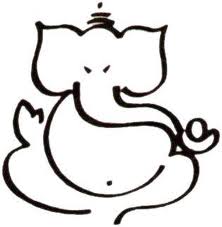
Did this trip do what it was supposed to? Get me out of my head, get me out of my comfort zone? Make me less insular, more creative and remind me of everything I don’t know (which is nearly everything)? And then some.
What changed for me? Only everything. Everything about my perceptions of the world and everything about my perceptions of myself. (Already I can see where this will be fodder for future amusement. I sound like a teenager.) About my perceptions of the world: For all the reading I do, for all that I am fairly well-informed, it's all theoretical when it is being absorbed through paper or a computer screen. The problems are abstract, the solutions are abstract, the people and the cultures are abstract. Being there, meeting real people, allowing myself to absorb and be absorbed into a different culture, made it all real and made it all matter to me. It sounds very trite to say that "Nepal" or even "developing country" are no longer abstractions, but now are faces and experiences, sights (shrines and temples and stupas and marigolds everywhere), sounds (horns!), smells (burning trash, the insanely fragrant tree I smelled every night walking to the volunteer house for dinner), tastes (Rom's honey, Asha's dahl bhat tarkari). But it's true.
That this change happened is no big surprise, but it is so profound and unreproduceable-in-any-other-way that it can't be ignored. What do poverty and neglect look like to me now? Tiny children playing untended in terrifyingly congested streets or on steep precipices in the mountains; a bruised baby covered in a rash, tended by his 6 or 7 year old cousin being treated by dragging him under near-scalding water in the hot springs at Tatopani because the nearest medical clinic is a 2-hour hike and a 4-hour bus ride away (and because I think they genuinely believed the water would help); complete lack of infrastructure—no stop lights or even stop signs, sidewalks, trash collection or disposal (thus the burning trash everywhere) or public sewage system; starving, mangy, lethargic dogs sleeping as if dead in the middle of streets and sidewalks. (What does obliviousness look like? Other westerners saying to me: Well at least the dogs are okay, look, they're so peaceful.)
By the same token, Nepal also evokes the incredible kindness of strangers and a remarkably secure feeling. There is violence to be sure—especially in marriages, especially against women. But I never felt in any danger. I walked the alleys between Scott's house and the volunteer house nightly in the pitch black. There were other people in those alleys, but I never felt afraid. I wandered around Kathmandu by myself a lot, rode buses and micros and a tuk-tuk and people were unfailingly helpful in getting me where I needed to go. The lengths to which Rom, Sujita, Rosainy and Karma went to make us feel at home, the incredible generosity. (Funny story: when I got ready to leave Tambuchet I asked them what I owed for my room and food for the 5 days. Sujita prepared a bill and presented it to me. It looked like this: 20501. I freaked out. This would have been about $300--not in the least unreasonable but I only had about 15,000 nrp with me. I excused myself and ran off to talk to Craig and Heather to see if I could borrow some money. When I came back, Sujita and Rosainy were laughing—apparently they write a vertical slash at the end of a number, rather than a horizontal one. "You thought it was 20,000rps!" Sujita laughed. My stay, including my 245 rps bus ticket, was less than $30. And before I left Rom pressed a jar of his homemade honey into my hands.)
On a personal level? I exceeded my wildest expectations for myself. All of the things I thought would be challenging—noise, dirt, pollution, traffic, being in a strange place where I don’t speak the language, travel glitches, living out of a backpack for a month, traveling alone—I thrived on (okay, I didn’t thrive on the pollution but it didn’t really phase me, either). I can't remember ever feeling so alive. I can't even describe the feeling of joy. Nor can I ever remember feeling so capable. Being challenged to create a legal services program from scratch: assess the need through interviews and internet research, design a solution, write a proposal and an MOU—I have never done anything remotely like that. But I didn't even pause to consider that I might not know what I was doing. I jumped in with both feet, assigning tasks to the other two volunteers I was working with, firing our translator and finding a new one when the first wasn’t doing what we needed him to, and figuring everything out as I went along. Also interesting to me is that I realized as I was leaving that Scott never thanked me or gave me any feedback on my work and I don't much mind; doing the work was enough. I know it is good.
It's very much like that post I wrote early on about knowing a thing and understanding a thing. Many people have told me that I can do anything I want and I guess on some level I believed that but I had no idea what it might look like and was so focused on all the things I don't have experience doing, or how much other people know that I don't. Now I get it, that accomplishing something is all about that ridiculously trite phrase: Just do it. Anything I don't know how to do I can figure out or find someone who knows how to do it and enlist them.
I know there's more I'm leaving out, but that's not a bad start.
(With thanks to Shad, who asked and kept asking until I answered.)

































































